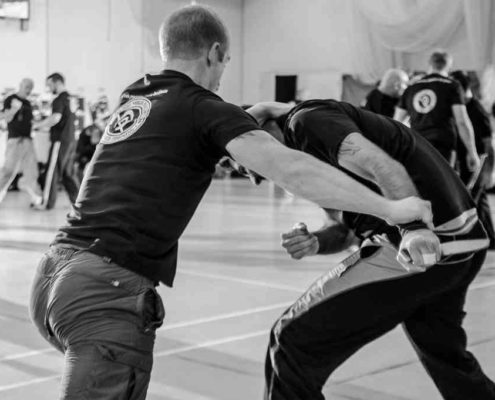Can You Teach Yourself Krav Maga? What You Can—and Can’t—Learn on Your Own

Krav Maga is a powerful, no-nonsense self-defence system originally developed for the Israeli military. Known for its practical techniques and aggressive counterattacks, it’s gained global recognition for its effectiveness in real-world situations. As interest in self-protection rises, many people search online for answers to the question: Can you teach yourself Krav Maga?
The short answer: you can start learning elements on your own, but to truly master Krav Maga’s principles—and apply them under pressure—you need professional instruction, training partners, and real-time feedback. If you’re local, check out Krav Maga lessons in Bristol to begin training with qualified instructors.
What You Can Learn on Your Own
While solo training has limits, it can be a productive way to build foundational skills and condition your body. Here are the best methods to get started:
1. Heavy Bag Training
A heavy bag is one of the most valuable tools for home-based Krav Maga practice.
Benefits:
- Power & Technique: You can work on punches, elbows, knees, and kicks. Practising combinations like jab–cross–knee can improve your precision, power, and flow. Try pairing with striking combination guides.
- Footwork: Move in and out with control. Krav Maga is mobile, not static—your ability to manage distance is critical.
- Endurance: High-intensity rounds simulate the cardiovascular demands of a real fight. Pushing through fatigue builds the resilience needed in chaotic confrontations.
2. Shadow Boxing
Shadow boxing isn’t just for boxers—it’s an essential Krav Maga solo drill.
Benefits:
- Technique Refinement: Slow things down to check your form. Use a mirror to adjust your stance, guard, and strike mechanics.
- Visualization: Imagine attackers from different angles—front, side, behind. Add verbal commands or roleplay threats to boost realism.
- Agility & Rhythm: Practise pivots, direction changes, and timing without resistance.
3. Bodyweight Conditioning & Mobility
Krav Maga isn’t just about fighting—it’s about surviving. Your fitness matters.
Training Suggestions:
- Squats, push-ups, and burpees build explosiveness.
- Core work (planks, mountain climbers) stabilises your strikes.
- Dynamic mobility drills (like hip openers and shoulder rolls) reduce injury risk.
For more ideas, try these Krav Maga-specific workouts or kettlebell routines.
4. Learning From Online Videos
Platforms like YouTube and online academies offer drills, tutorials, and technique breakdowns. These can be incredibly helpful, especially when taught by reputable instructors.
Tips for Learning Online:
- Look for instructors certified by organisations like British Krav Maga or other national governing bodies.
- Avoid flashy or overcomplicated tutorials—real Krav Maga is simple, brutal, and direct.
- Supplement with reading material, such as What is Krav Maga? or Krav Maga principles.
However, watching videos can’t replace doing. Krav Maga is based on instinctive reactions and close-quarters pressure—you won’t truly understand those until you’re in the mix.
What You Can’t Learn Alone
Even if you’re disciplined, there are vital parts of Krav Maga you simply can’t teach yourself.
1. Timing, Distance & Reaction Speed
These can only be developed by training with another person. When someone throws a punch, grabs you, or tries to take you down, your ability to react appropriately is critical—and only live drills can teach you that.
2. Stress Response Training
Krav Maga prepares you for high-adrenaline, asymmetrical situations: bigger attackers, surprise ambushes, weapons. Practising under pressure builds mental toughness and teaches you to stay functional while overwhelmed.
In solo training, your nervous system never gets tested. In class, it does.
3. Partner Drills & Resistance
From bearhug escapes to disarming a knife attack, you need resistance to build muscle memory and evaluate if a technique really works. Your training partner brings unpredictability—just like the street.
4. Safe, Structured Progression
Without coaching, it’s easy to build bad habits—or worse, injure yourself.
At Bristol Titans Krav Maga, students progress through a structured curriculum that builds core movements, then pressure-tests them. You’ll get feedback, coaching, and confidence, not confusion.
Explore more resources in our Krav Maga FAQ and training Resources Hub.
Why In-Person Training Matters
Krav Maga isn’t a sport—it’s a survival skill. It’s about responding to violence fast, aggressively, and effectively. The stakes are high, and learning properly matters.
Training at a professional academy offers:
- Immediate feedback on form, timing, and control
- Scenario drills with multiple attackers, weapons, or confined spaces
- Community support from others on the same journey
- Higher retention thanks to structured repetition and progression
Our classes at Bristol Titans focus on real-world self-defence. We also offer options for beginners, kids, and women’s self-defence.
See what our students are saying in their reviews.
Final Thoughts: Can You Learn Krav Maga at Home?
So, can you teach yourself Krav Maga? You can lay the groundwork—but if you want real ability, the kind that works when it counts, you need to train with others under guidance.
Start solo if you must, but don’t stop there. The difference between YouTube learning and real training is like the difference between watching a fight and surviving one.
✅ Ready to start? Join a trial Krav Maga class in Bristol and experience the difference first-hand.
Your safety is worth the investment.
